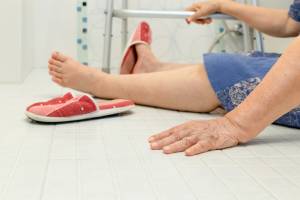
Fall Prevention | iStock
A fall for an elderly person could end independent living or even life. Death claims a full 25 percent of seniors within six months of a fall that fractures a hip. In British Columbia, falls represent the most common source of injuries among seniors. One-third of people in the province age 65 and older will experience them. Over 100,000 hospitalizations result every year when seniors fall. Across Canada, 85 percent of senior hospitalizations for injuries happen because of falls.
High Costs of Falling Down
Falls exact a toll on society and the personal lives of injury victims. Within British Columbia, fall injuries among the elderly accounted for approximately $195 million in medical costs in 2010. Hospitalizations after falls usually last twice as long as hospital stays for other reasons.
Too often, the injuries leave permanent damage. Half of the people who break their hips will never fully regain their walking abilities. Reduced mobility restricts activities, promotes isolation, and lowers quality of life. Even if an older person recovers from a fall, the fear of falling again could worry the person to the point of depression. The person might choose to forgo activities, which contributes to physical deterioration and heightens the risk of falling.
Types of Injuries
Hospitalization statistics from British Columbia between the years 2005 and 2010 reveal that 47 percent of falls produced hip fractures. Most of the remaining injuries involved the arms, back, head, abdomen, and pelvis.
Assess Your Loved One’s Fall Risk
Your proactive efforts could spare your loved one from trauma. To gain an understanding of your loved one’s challenges and risk factors, investigate the following issues:
- Become informed about the senior’s health status. Trouble getting up and down or medication that causes dizziness or drowsiness is a red flag. Chronic conditions, like diabetes or arthritis, increase risk because of their association with pain, depression, and multiple medications.
- Observe how the person walks. Are you noticing the person sway or frequently lean on furniture or walls?
- Find out about the senior’s eyesight. Glasses might have an outdated prescription. Bifocals could interfere with a person’s ability to see stair steps properly.
- Evaluate the home for hazards like dark halls, clutter, and missing handrails.
Aging inevitably means adapting to new physical circumstances. Your efforts to inform your loved one about safe ways to maintain physical activity could prevent a life-changing fall. In Part 2, you will find detailed advice for preventing falls.

